Restoring Ponds & Waterways in The Wiregrass region of Southeast Alabama
Dothan, AL Pond Dredging in The Wiregrass
-
Choctawhatchee & Pea River Watersheds
-
Farm Ponds & Agricultural Reservoirs
-
Red Clay Runoff & Silt Solutions
-
Warm-Climate Weed & Algae Control
In The Wiregrass region of Southeast Alabama, water management is centered on agricultural needs, neighborhood ponds, and the flow of the Choctawhatchee River watershed. The frequent, heavy rains and warm, humid climate mean farm ponds, retention areas, and even small municipal lakes in Dothan face constant silt wash and rapid aquatic weed growth. Our expertise focuses on these specific drainage and agricultural runoff issues to keep your rural or community waterway clear and functional.
Why Dothan Waterway Owners Choose Us
Welcome to The Wiregrass region of Southeast Alabama. Water systems here are dominated by a blend of farm ponds, rural homestead lakes, and the drainage of the Choctawhatchee and Pea River systems. This unique agricultural landscape, combined with a warm, humid climate, leads to specific issues like accelerated aquatic weed growth and heavy runoff into the waterways of Dothan. We provide solutions rooted in local experience.
Deep Central AL Waterway Knowledge
- Our team understands the unique hydrology of Southeast Alabama, from the Choctawhatchee River system to the specific needs of farm ponds and irrigation reservoirs.
- We know how agricultural runoff affects water quality in these Wiregrass communities.
- Focused expertise on the Chipola River and other feeder tributaries in this region.
Red Clay Sediment Experts
- We specialize in managing the pervasive red clay runoff common in The Wiregrass.
- Our methods target the silt and sediment washing in from pastureland, dirt roads, and fields during heavy rain events.
- Protecting your pond's depth and clarity from rapid sedimentation.
River & Reservoir Experience
- We focus on local permits and regulatory compliance with ADEM for both municipal and large agricultural pond projects.
- Ensure your dredging plan adheres to rules governing flow into the Pea River and its tributaries.
- Experience with seasonal water level shifts caused by intense hurricane-season rain patterns.
HOA & Stormwater Community Specialists
- We service both subdivision retention ponds near the military presence of Fort Novosel and shared lakes in smaller Wiregrass communities.
- Maintenance solutions for drainage and stormwater systems heavily impacted by farm and road runoff.
- Handling both HOA stormwater systems and private, shared farm ponds.
Family & Heritage Waterfronts
- We respect the heritage of multi-generational properties throughout Southeast Alabama.
- Whether it’s restoring a family farm pond used for generations or clearing a private access point on the Choctawhatchee River, we treat your land with the care it deserves.
- Dedicated to preserving the fishing and recreation value of your heritage waters.
Straight Talk, Fair Pricing
- Rooted in the practicality of rural life, we offer cost-effective solutions tailored to Wiregrass budgets.
- Our goal is to provide honest assessments and avoid over-engineering.
- Respecting the hard work that built these agricultural communities with fair, transparent pricing.
Specialized Dredging Services for Alabama

Mechanical Excavation Dredging
Ideal for coves on Lake Martin, Lay Lake, and neighborhood ponds across Alabama suburbs. We use sectional barges for precision sediment removal in smaller HOA lakes, handling heavy red clay and dense debris found throughout central and north Alabama.
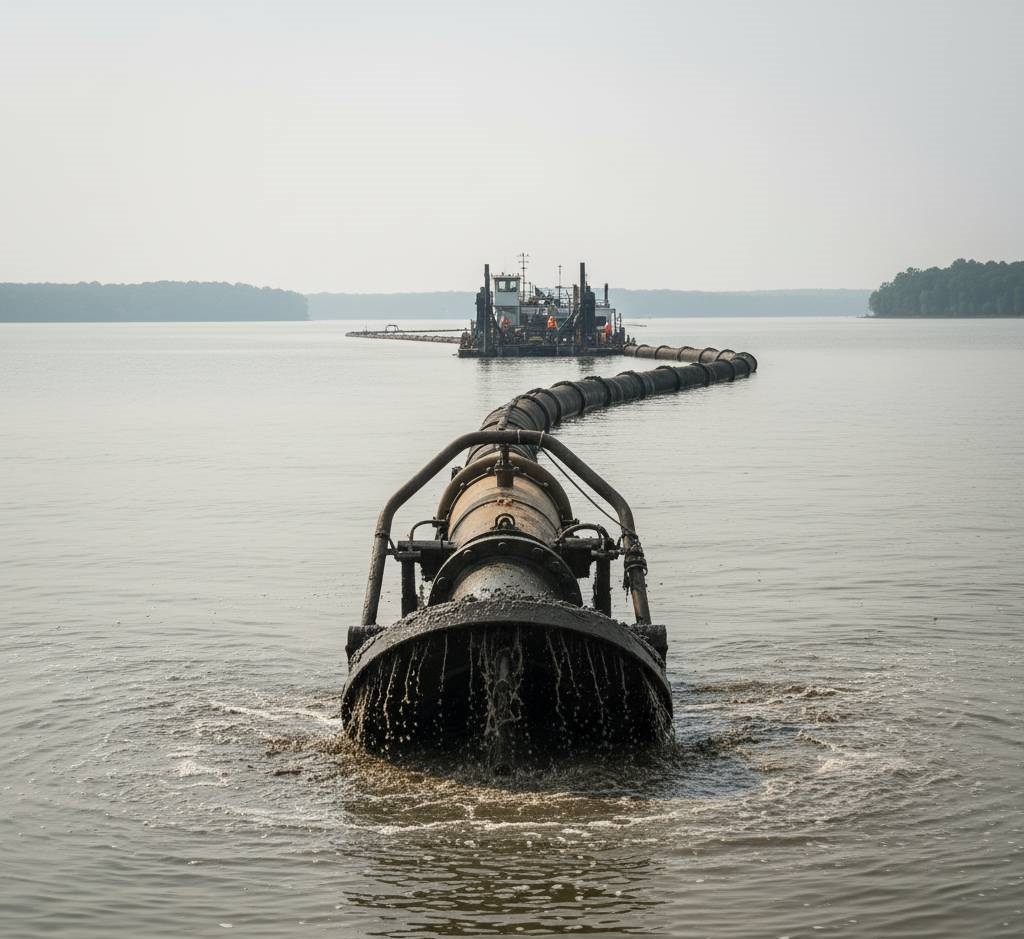
Hydraulic Pumping Systems
Best for large-scale operations on major water bodies such as Guntersville Lake, Wheeler Reservoir, and the Tennessee River system. Our equipment can pump fine silt and muck over long distances to remote dewatering sites, ideal for TVA reservoirs.
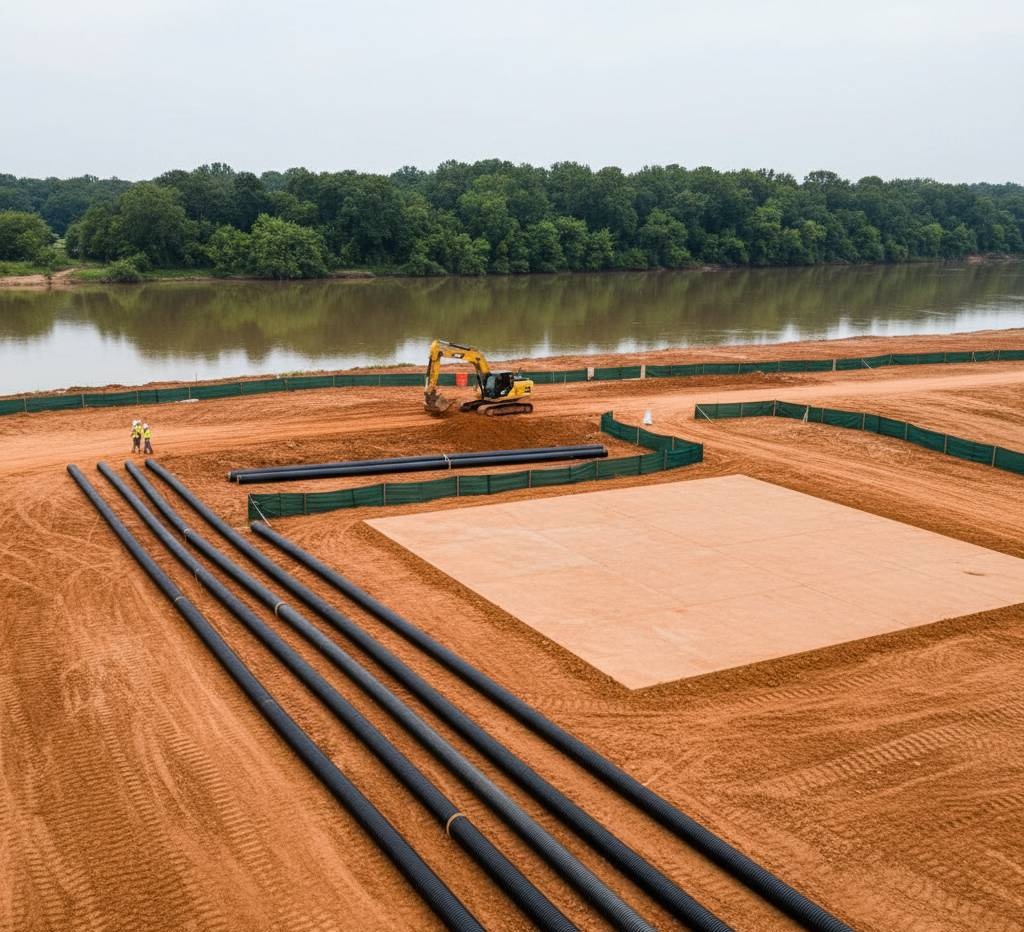
Integrated Sediment Management
A comprehensive approach ensuring compliance with ADEM regulations. This includes on-site dewatering using methods suitable for Alabama's diverse soils (from Tennessee Valley clay to Gulf Coast sand) with approved disposal or beneficial reuse planning.
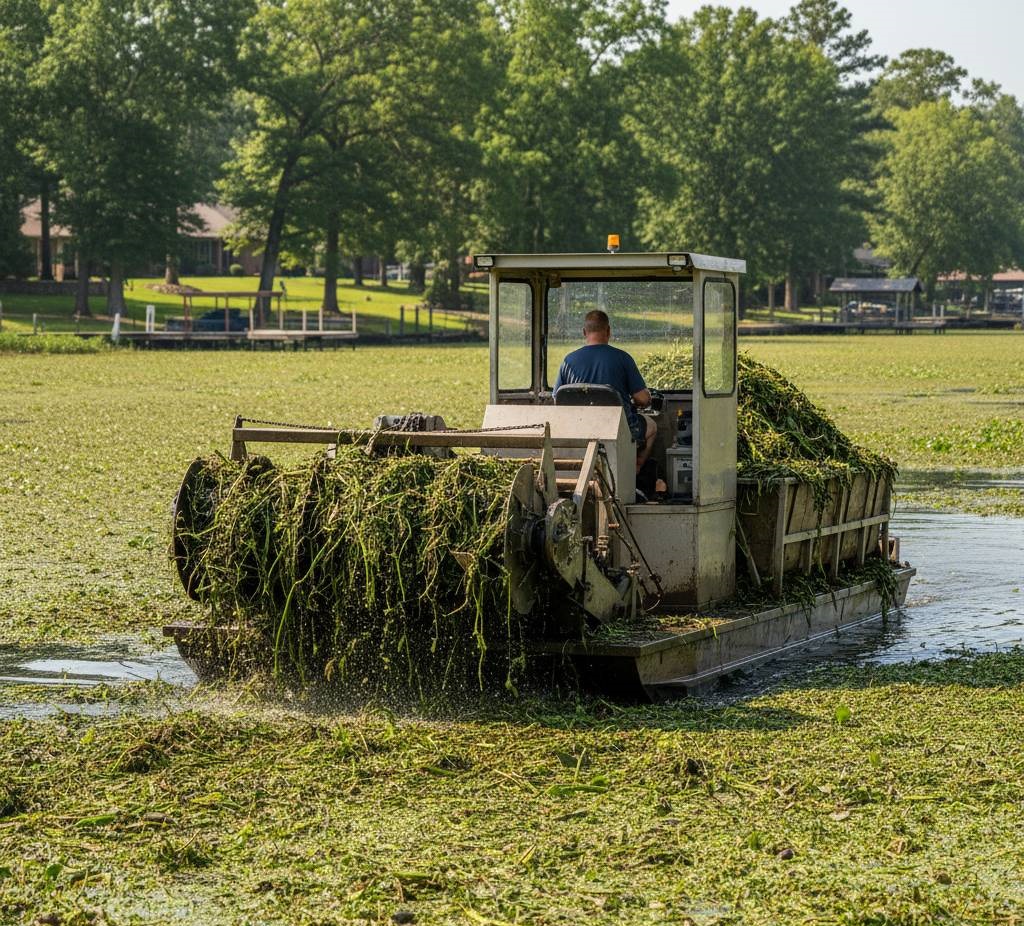
Aquatic Growth Control
Targeted removal of aggressive Alabama aquatic weeds—like hydrilla, water hyacinth, and milfoil—to combat the effects of shallow water and nutrient-rich sediment that cause severe weed infestations in our warm southern climate.
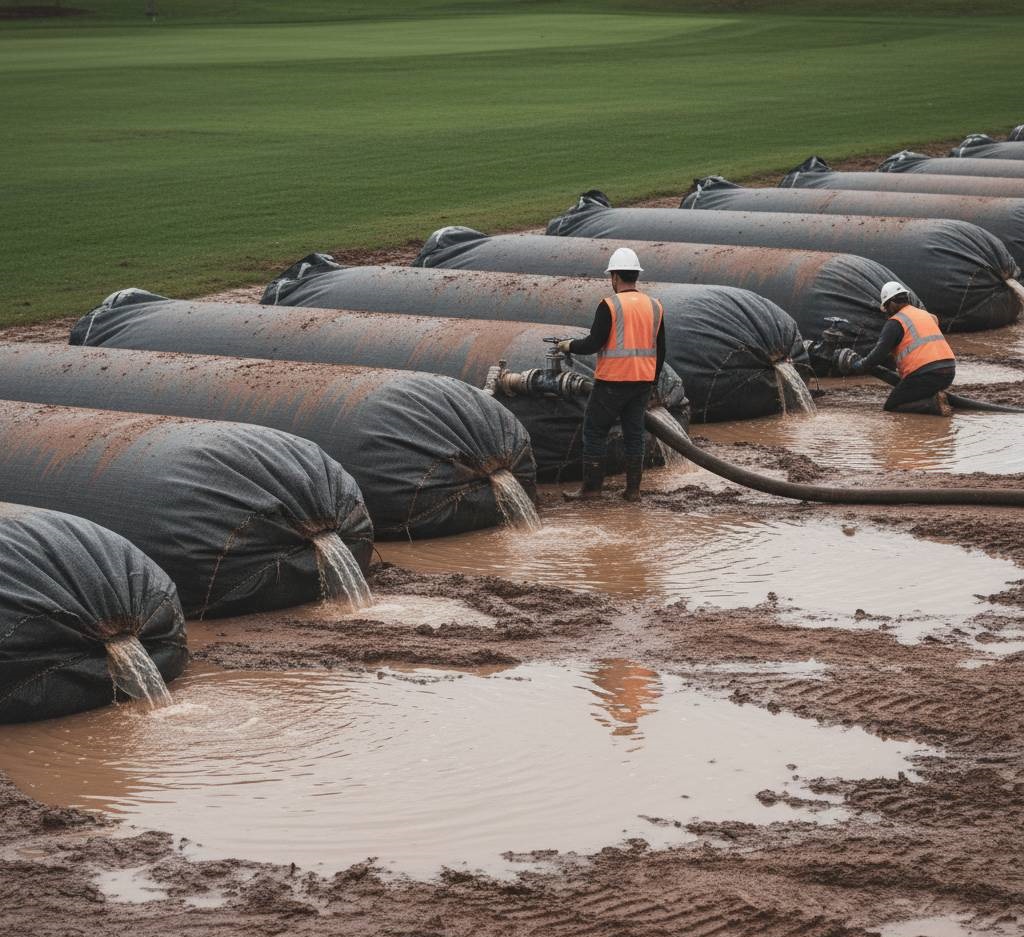
Advanced Dewatering Techniques
Installation and management of Geotextile tubes for efficient dewatering on HOAs, golf courses, and properties across Alabama. We also design and manage upland pad drying operations where available land permits, with special consideration for red clay disposal.
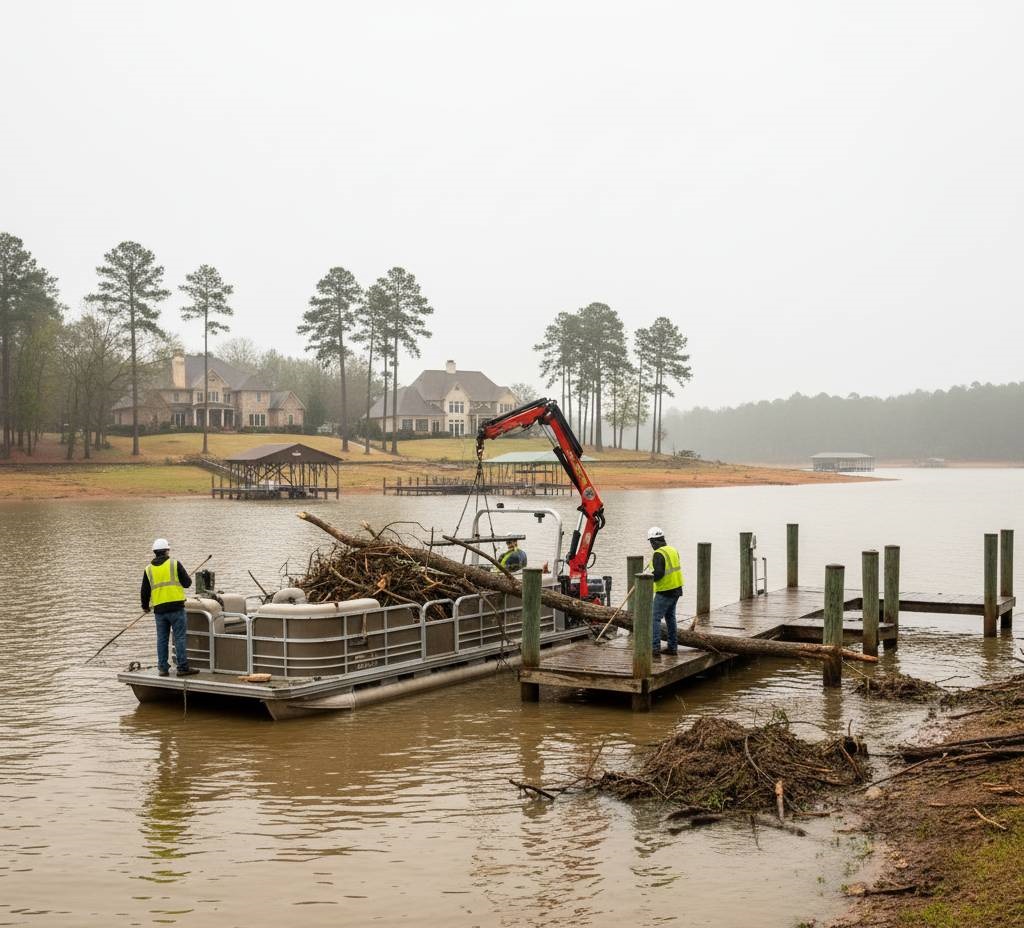
Waterway Maintenance Programs
Post-event cleanup and maintenance after major storms or TVA drawdowns. We offer season-based lake management programs to prevent sediment re-accumulation, particularly important during Alabama's hurricane season and seasonal water level adjustments.
Let's Talk About Your Dothan Lake
Whether you're dealing with red clay sediment buildup, losing dock access, or just noticing your lake isn't as deep as it used to be, we can help. We'll come out, take a look, and give you straight answers about what needs doing and what it'll cost. No pressure, no sales pitch—just honest advice from folks who know Alabama lakes.
Common Questions from Dothan Waterway Owners
Real answers about dredging Southeast Alabama’s rivers and ponds—based on projects across Wiregrass communities
Do I need permits to dredge my Dothan lake?
Almost always, yes. For any project draining into a public waterway, especially the Choctawhatchee or Pea River systems, you need state approval from ADEM. Dredging an entirely self-contained farm pond or stormwater unit often requires less regulatory oversight, but responsible disposal of red clay runoff is always mandatory in The Wiregrass region of Southeast Alabama. We guide you through the local ADEM process.
Good news is, we handle all that paperwork. We know who to call at ADEM and what they're looking for, so you don't have to worry about becoming an expert in state environmental law just to fix your waterway. That's worth something when you're trying to get your water system ready for the next rainy season.
What's the deal with Alabama's red clay sediment?
In Southeast Alabama, red clay and silt wash into ponds and tributaries is a constant issue due to the surrounding agricultural landscape and frequent heavy rain events. This dense material settles quickly, especially in shallow farm ponds, causing loss of depth. Our equipment is specifically designed to cut through this compacted clay, a necessity for operating successfully in the Wiregrass communities.
The clay itself isn't harmful, but too much of it ruins water clarity and fills in swimming areas. We remove it carefully—the goal is getting your waterway back to proper depth and flow, not stirring up more problems. And once it's out and dewatered, that red clay actually makes excellent, stable fill material.
Where does the dredged sediment go?
A major benefit of working with farm ponds and rural sites in The Wiregrass is the option for on-site beneficial use. The removed red clay sediment, once dewatered, is excellent for stabilizing eroded banks, filling low spots, or building up property berms, which is often preferable to trucking it off-site in this part of The River State. We always ensure ADEM-compliant disposal.
The disposal method depends on sediment quality, your property layout, and local regulations. We'll explain all your options during the site visit and include disposal costs in our estimate so there are no surprises. Some property owners like keeping the material on-site; others prefer us to haul it away completely.
What type of dredging is best for my Dothan property?
Given the prevalence of smaller, shallower farm ponds, retention ponds, and irrigation reservoirs in Southeast Alabama, mechanical dredging is often the most practical and cost-effective method. However, larger jobs on the main Choctawhatchee River system may require hydraulic pumping. We always recommend the best technique based on the sediment (especially compacted red clay) and the water body's function.
We're not trying to upsell you on equipment you don't need. We evaluate your specific situation to determine the least invasive, most efficient way to remove the sediment and restore the pond's original depth.
How much does lake dredging cost around Dothan?
Dredging costs in The Wiregrass are often driven by the difficulty of accessing small, remote farm ponds and the time required to manage the disposal of heavy red clay sediment. We offer competitive, localized pricing that includes factors like long-term solutions for aquatic weed growth—a major cost factor in this warm, humid climate. We provide a detailed, on-site quote.
We'll give you a detailed estimate after seeing your property. No hidden fees or surprise charges. We want you to be confident in your investment.
When's the best time to dredge in Alabama?
Fall through early spring—October through April—is ideal. This avoids the most intense heat and peak water usage. Scheduling during the slower season also helps us avoid peak hurricane-season rain patterns which can temporarily raise water levels and increase the risk of heavy rain washouts, making dewatering and sediment management much more difficult in The Wiregrass.
Can we work in summer? Sure, but it's hot as blazes, afternoon thunderstorms can shut us down for days, and nobody wants to hear heavy equipment when they're trying to enjoy their property. We try to schedule around you, but fall/winter just makes more sense for everyone involved.
How long will my Dothan dredging project take?
Typical farm pond or smaller municipal retention pond projects in Southeast Alabama often take 1-3 weeks, depending on the volume of red clay to be moved. Larger projects involving the Choctawhatchee River tributaries or extensive weed removal in warm waters may take longer. Our schedule accounts for the time needed to effectively dewater the agricultural silt and minimize disruption.
We stay in touch throughout the process and build realistic schedules. If your goal is having the area fully restored by next summer, call us in late summer or fall so we can get permits sorted and schedule work during the cooler months. We keep you updated every step of the way.
Will dredging hurt the fishing in my lake?
For farm ponds in The Wiregrass, removing years of silt and organic buildup actually improves the long-term habitat by restoring depth and increasing the volume of cool, oxygenated water. This is crucial for controlling rapid algae or weed growth caused by the warm climate and agricultural runoff. In the long run, dredging your pond improves fishing and habitat.
Most property owners tell us fishing gets better after dredging, not worse. Your family should have the same great pond and river experiences you remember.
Alabama Dredging Service Regions
We provide comprehensive dredging solutions across Alabama's diverse waterways, from the Tennessee Valley to the Gulf Coast, each with unique water management challenges and opportunities.
1. Central Alabama (Greater Birmingham + West AL + River Region)
The heart of Alabama, where the Magic City metro blends with suburban lake living, West Alabama's rich traditions, and the historic River Region. This corridor revolves around the Cahaba, Coosa, and Black Warrior Rivers, with popular waters like Lay Lake, Lake Jordan, and Lake Tuscaloosa shaping daily lake life. Here, Roll Tide and War Eagle fans live side by side along river-fed neighborhoods and community lakes.
Key AL Locations:
2. North Alabama (Tennessee Valley)
Defined by the Tennessee River and its TVA-managed reservoirs, North Alabama balances flowing river systems with backwater coves, tributaries, and sloughs. Work here focuses on keeping deep-water access, managing silt in current-affected areas, and addressing red clay and fine sediment that move with seasonal drawdowns and heavy rains.
Key AL Locations:
3. East Alabama – Auburn-Opelika & the Chattahoochee–Tallapoosa River Region
Where river systems and lake life meet. Anchored by the Auburn-Opelika corridor, East Alabama is shaped by the Chattahoochee and Tallapoosa Rivers with major regional waters like Lake Martin and Lake Harding, plus river-fed lakes along the Coosa chain (including Logan Martin and Neely Henry). Our work balances river current, watershed inflows, and red clay sediment that settles into coves, community lakes, and stormwater systems.
Key AL Locations:
4. The Wiregrass (Southeast AL)
A rural, agricultural landscape where ponds and warm-water rivers drive daily water management. The Wiregrass features the Choctawhatchee and Pea River watersheds, extensive farm and irrigation ponds, and subdivision retention systems. Projects focus on weed and algae control, sediment removal after heavy rains, and practical restoration for working properties and neighborhoods.
Key AL Locations:
5. Gulf Coast / Lower Alabama (LA)
Where The River State meets the coast. Mobile Bay, the Mobile–Tensaw Delta, and the Intracoastal Waterway define this coastal system, with tidal influence, brackish conditions, and storm-driven sediment movement. Canal maintenance, marina access, and post-storm recovery are core needs alongside year-round waterfront living and tourism.
Key AL Locations:
If you don't see your area listed, reach out — we frequently take on projects across rural lakes, private ponds, and unique waterfront properties throughout Alabama.